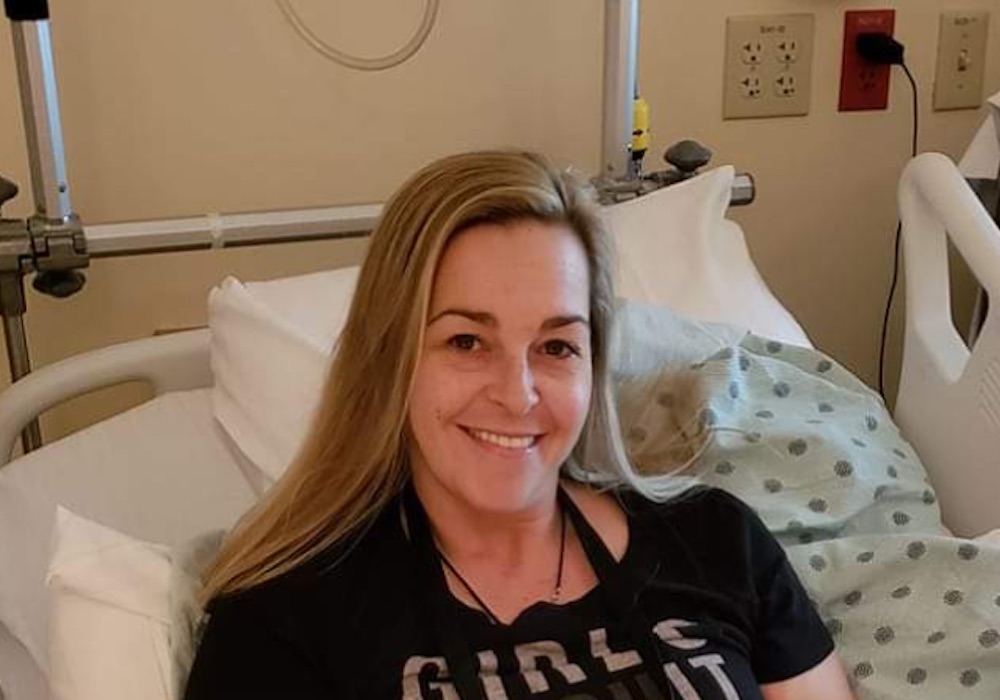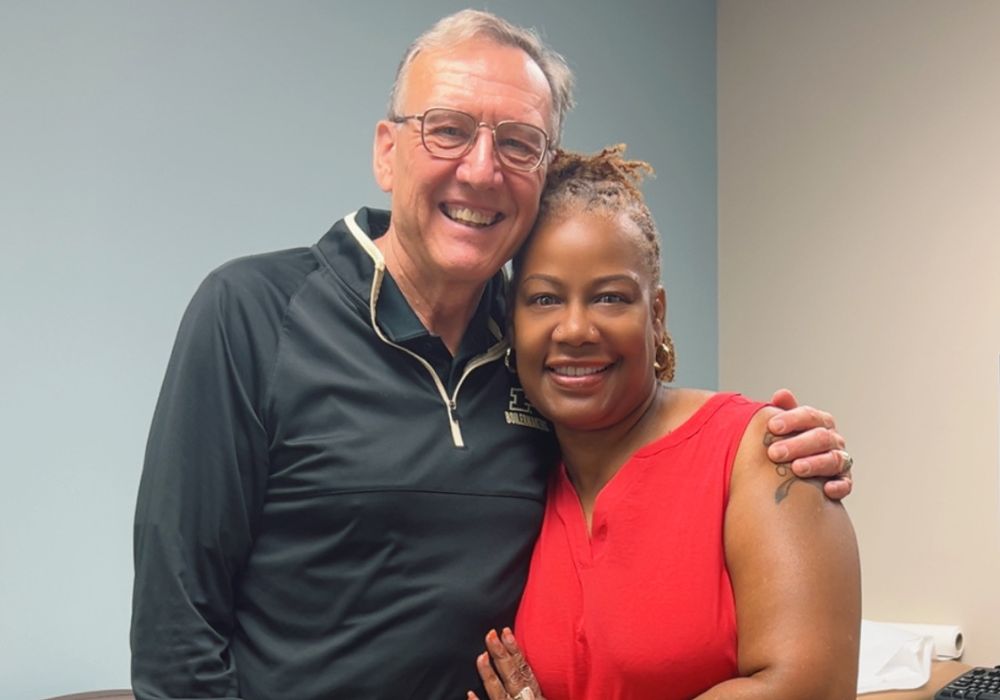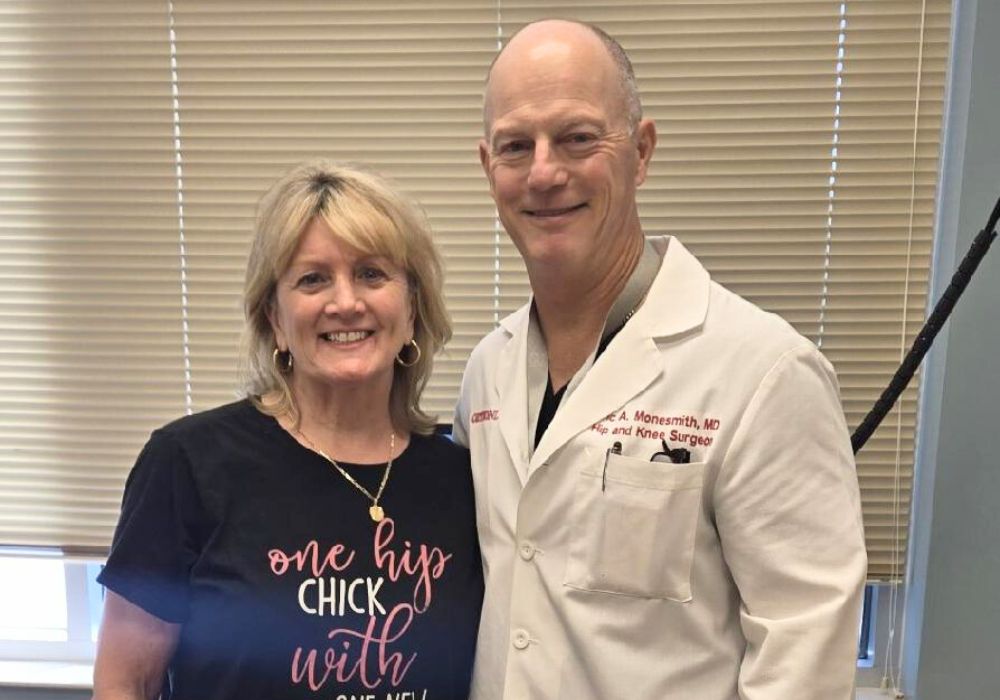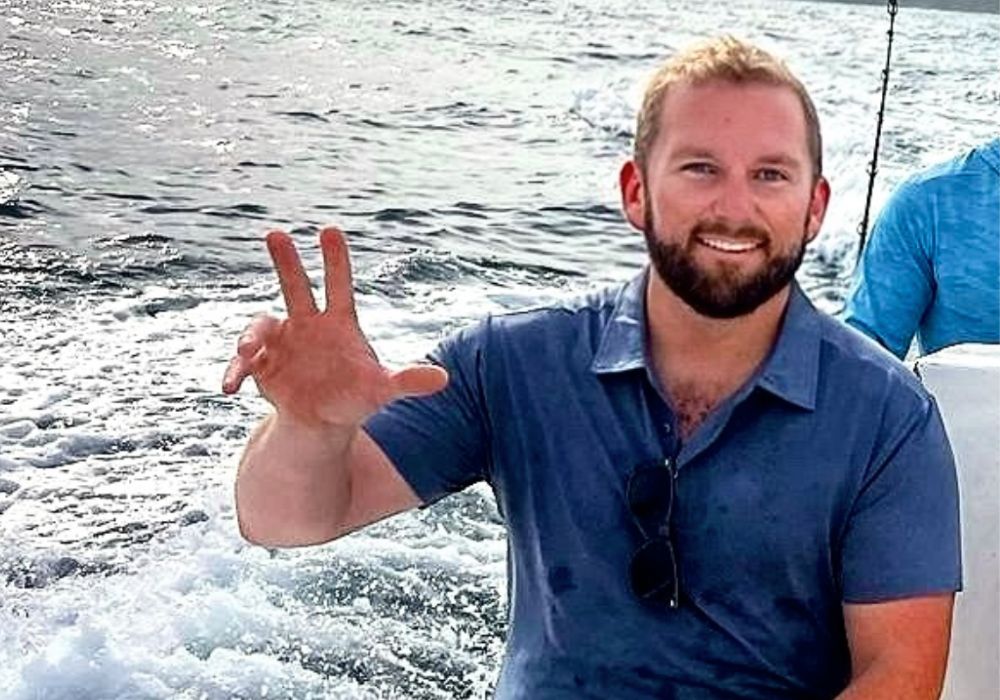THIS POST IS PART OF THE ULTIMATE GUIDE TO FOOT AND ANKLE INJURIES
After 20 years of pain, Sarah Kinney has found lasting relief through amputation. She began to show the first signs of rheumatoid arthritis of the ankle when she was just 14 years old and now, at 39, she found a solution she didn’t even know was available to her.
Rheumatoid arthritis is an autoimmune disease where the immune system attacks its own tissues. Immune cells attack the synovium covering the joint, causing it to swell. Over time, the synovium invades and damages the bone and cartilage, as well as ligaments and tendons.
By the time Sarah was 26, the pain from arthritis of the ankle was so intense, she no longer had the ability to walk.
Despite the constant pain she faced, Sarah has always been determined to find solutions and live her life. She decided to undergo a total ankle arthroplasty at OrthoIndy Hospital, performed by former OrthoIndy surgeon, Dr. Michael Shea. Sarah’s condition improved after surgery, but over the years, the joint replacement loosened and began to fail, causing more pain.
“Ankle replacements are not at the stage where they have the longevity that TKA (total knee arthroplasty) and THA (total hip arthroplasty) do,” said OrthoIndy trauma surgeon, Dr. Renn Crichlow. “They will fail, it’s just a matter of when.”
Sarah was determined to live pain-free and started looking for a permanent revision or replacement option.
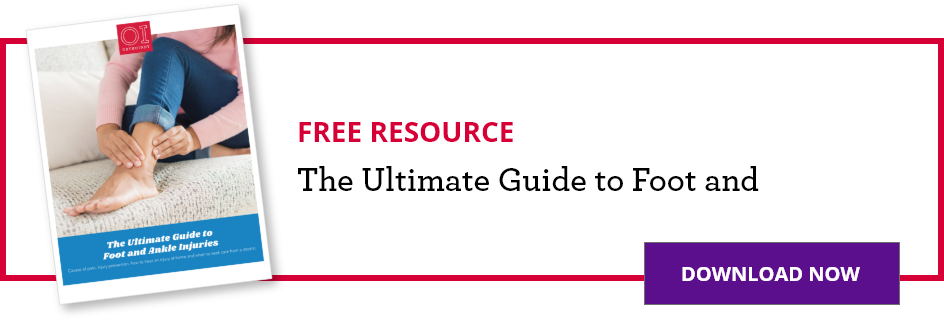
How do you treat arthritis of the ankle?
Sarah met with Dr. Crichlow last year. She had enjoyed her first OrthoIndy experience years ago and knew that was where she wanted her next surgery. She did a web search and found Dr. Crichlow and walked into the consultation hopeful she was a candidate for amputation.
“I consulted with Dr. Crichlow and immediately knew he was the surgeon for me,” Sarah said. “His office operates seemingly much like a triage and despite the hustle and bustle he was calm, confident and attentive.”
A physician must choose you as a candidate for amputation, so Sarah knew he may say no to her request. She was nervous denial would lead her to a life of disability and pain medications and hoped for a solution.
Before Dr. Crichlow confirmed she was a candidate for amputation, Sarah struggled physically and emotionally with her pain.
With the extensive damage she had, another joint replacement would not have been effective. “Sarah was young, healthy and had a great mindset, so she was a good candidate,” Dr. Crichlow said.
Dr. Crichlow and Sarah agreed on
LEARN MORE ABOUT TRAUMA CARE AT ORTHOINDY
What is a below the knee amputation?
Sarah underwent surgery at the beginning of 2019. A below the knee amputation is a surgery to remove the lower half of the leg, in Sarah’s case, the part infected with arthritis. Your surgeon will keep as much bone, skin, blood vessels and nerve tissues as possible.
“I knew prosthetics had advanced and had also seen amputees running so I was prepared to work hard, get in shape, finally take care of my body the way it deserved and set some pretty big goals for myself,” Sarah said.
How long does it take for a below the knee amputation to heal?
Less than one-year post-surgery, Sarah is walking and even running for the first time in over two decades. She participated in physical therapy and was determined to get in physical shape. Sarah is off all of her pain meds from the last 20 years, she quit smoking and lost 30 pounds. Pain no longer dictates her everyday life and she feels like she has finally been given a second chance.
Last Thanksgiving, she was able to participate in the Drumstick Dash, a 2.75-mile walk in Indianapolis, and hopes to begin running marathons when she can get a blade for longer distances.
“I saw him recently and he signed my first bib ‘race tag’ from the Drumstick Dash,” Sarah said. “Saying ‘thank you’ just doesn’t quite seem adequate.”
Sarah emphasizes setting high goals makes success intentional.
“Follow your heart and always begin with an end in mind,” Sarah said. “It’s important to visualize the outcome you want. Deciding is the hardest part.”
To schedule an appointment with Dr. Crichlow, please call 317.917.4384 or at OrthoIndy.com/Request.
Schedule an appointment
Your well-being is important to us. Click the button below or call us to schedule an appointment with one of our orthopedic specialists. If your injury or condition is recent, you can walk right into one of our OrthoIndy Urgent Care locations for immediate care. For rehabilitation and physical therapy, no referral is needed to see one of our physical therapists.


